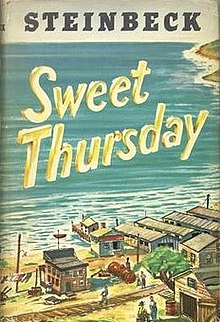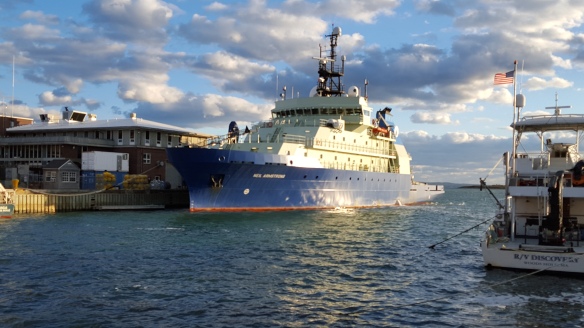 John Steinbeck is one of my all-time favorite authors. While Sweet Thursday is completely different from a novel like The Grapes of Wrath, it contains the magic, joy, humanity, and wisdom that he infuses into his novels so well.
John Steinbeck is one of my all-time favorite authors. While Sweet Thursday is completely different from a novel like The Grapes of Wrath, it contains the magic, joy, humanity, and wisdom that he infuses into his novels so well.
I love the way Steinbeck shows community life, especially in Cannery Row and Sweet Thursday. It doesn’t matter that the characters are down on their luck because they all know each other and look out for each other. Sweet Thursday made me want to live in a boiler or at the Palace Flophouse. It made me want to seek these characters out and go to a Hooptedoodle to celebrate life and friendship.
Sweet Thursday was first published in 1954. Doc comes back from World War II and attempts to resume his life at his Cannery Row laboratory. Mack and the boys at the Palace Flophouse notice that he’s not quite the same after the war and they try to cheer him up.
 There are so many hilarious and insightful scenes in this novel. One part that made me laugh was when Doc went out on a date and talked about octopi the whole time. The story goes on to say, “the subject of her eyes, her feelings, her skin, her thoughts, did not come up.”
There are so many hilarious and insightful scenes in this novel. One part that made me laugh was when Doc went out on a date and talked about octopi the whole time. The story goes on to say, “the subject of her eyes, her feelings, her skin, her thoughts, did not come up.”
Then there’s Hazel, known as the densest of all the characters living at the flophouse. Fauna reads his horoscope one day and tells him that he’s going to become President of the United States. Hazel doesn’t want to be President, but he reluctantly tries to take on the responsibility.
One of my favorite characters was Jingleballicks, a scientist friend of Doc’s who suddenly appears in his laboratory. He loves to rant and rave and argue with Doc. When he first appears, Doc accuses him of being seen outside on his hands and knees, pulling a worm out of the ground with his teeth. That’s probably one of the most unique ways of introducing a character that I’ve ever noticed.
I loved everything Jingleballicks said while ranting and raving, like this:
“Man has solved his problems. Predators he has removed from the earth; heat and cold he has turned aside; communicable disease he has practically eliminated. The old live on, the young do not die…It is a cosmic joke. Preoccupation with survival has set the stage for extinction.”
It’s amazing that this was published in 1954. The novel mentions that doing away with fishing limits during the war devastated the area’s fishing industry, while adding, “it was done for patriotic reasons but that didn’t bring the fish back.” You’d never think a story like this would contain such environmental messages.
Mostly though, this novel is a celebration of community life and friendship. The day of Sweet Thursday, the day everyone anticipates, is perfectly described in all kinds of ways. Here are a few:
“There is no doubt that forces were in motion on that Thursday in Cannery Row. Some of the causes and directions have been in process for generations. There are always some people who claim they felt it coming. Those who remember say it felt like earthquake weather.”
“Old people sit looking off into the distance and remember inaccurately that the days of their youth were all like that.”
“Miss Graves, who sings the lead in the butterfly pageant in Pacific Grove, saw her first leprechaun up in back of the reservoir – but you can’t tell everything that happened every place on that Sweet Thursday.”
Of course, I’m not going to say what happens on Sweet Thursday. You’ll have to read the book to find out. Happy weekend – I hope you’ll find a Hooptedoodle out there somewhere!
A huge thank you to Patsy from Patsy’s Creative Corner and BJ at My Book-a-logue for the latest reviews of Ocean Echoes. You can find beautiful paintings and drawings at Patsy’s Creative Corner and excellent book reviews at My Book-a-logue. The latest ocean life paintings by Patsy were inspired by Ocean Echoes. That means so much to me. Please visit and follow if you’re not familiar with them already.
Thank you to everyone for reading Ocean Echoes. It’s so nice to know that the book has touched a few lives out there – that makes it all worthwhile.












